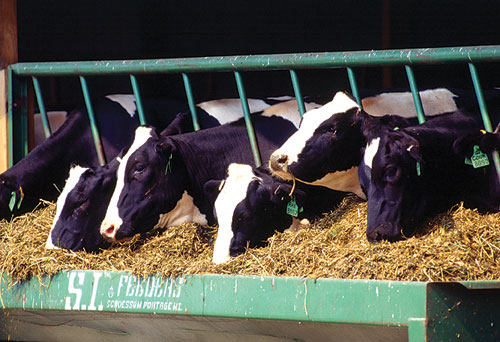Like humans, livestock should not be treated with antibiotics when it is not necessary.
The Veterinary Feed Directive (VFD) per FDA guidelines for veterinarians to authorize animal drugs intended for use in or on animal feed that require the supervision of a licensed veterinarian.
Antibiotics should only be used for medical reasons and only if that particular antibiotic is shown to be effective against the given disease said Heidi Ward, University of Arkansas Assistant Professor and University of Arkansas Cooperative Extension Service veterinarian.
Producers have used antibiotics for decades as a catch all for all types of illness.
This type of antibiotic use has been shown to lead to bacterial resistance, Ward said.
This is a problem considering that antibiotics are shared between animal and human medicine.
Ward said the 2013 Report from the Centers for Disease Control and Prevention shows that 400,000 illnesses occur annually from food borne antibiotic resistant bacteria (Campylobacter and Salmonella), this is what started the conversation about antibiotic use in animal feed.
Producers are encouraged to form a working relationship with a veterinarian in order to develop a solid preventative herd health plan.
“Appropriate and timely vaccinations and deworming are the best way to avoid antibiotic use,” Ward said. “Also, ensuring optimum immunity by providing quality feedstuffs is important as immunity strongly depends on a healthy gut.”
The use of probiotics in cattle feed is an emerging practice that promises to help with gut health. Use of probiotics and prebiotics in animal feeds has been shown to benefit digestion, animal performance and the immune system. The microbe population of the rumen must be healthy and in appropriate numbers/balance for proper digestion of feed, and health of the animal. Probiotics are products that contain living microorganisms – bacteria and/or yeasts. Prebiotics are non-digestible sugars that play a beneficial role in aiding “good” microbes and protecting against the “bad” ones.
Many cattle producers have already been using supplements to promote growth in their cattle.
The USDA supports Ward’s claim, suggesting supplements as an alternative to the use of antibiotics.
For example, using Vitamin in the treatment of mastitis in dairy cattle is a good example of supplements as alternatives.
Per the USDA, essential oils are also an alternative to antibiotics.
“Essential oils in citrus, reduce foodborne pathogens found in the gut of animals,” according to the USDA.
“Ideally, the forage and/or feed should be tested for nutritional content to guide which supplements are needed,” Ward said.
The most important step in treating livestock is consulting with a trusted veterinarian.
“I cannot stress enough the need for veterinarians in livestock production,” Ward said.




